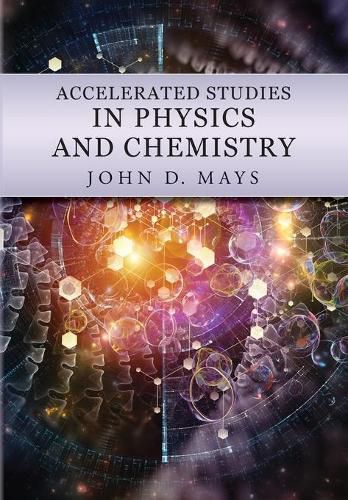Readings Newsletter
Become a Readings Member to make your shopping experience even easier.
Sign in or sign up for free!
You’re not far away from qualifying for FREE standard shipping within Australia
You’ve qualified for FREE standard shipping within Australia
The cart is loading…






ASPC is an ideal first science course designed for honors-level or accelerated high school students. It can be used for other high school grade science as well.
Teachers may be familiar with IPC courses (integrated physics and chemistry). ASPC is similar but goes deeper into topics so that students get a more enduring introduction. ASPC also moves along a little faster than our other physics offering, Introductory Physics.
This accelerated text is for students who love science, are motivated, and are quick on the uptake. Typically, these are students who at least took Algebra I in the 8th grade. They also are organized and know how to study. They also will read the text.
As with all Centripetal Press curriculum, ASPC is a mastery-oriented text. Mastery learning means different things to different people. To us, it means a series methods and strategies that dramatically improve student retention of content. And Centripetal curriculum has a proven history of accomplishing this.
For a full explanation of mastery methods and a philosophy of science education that will transform your school or home learning context, read our forthcoming book From Wonder to Mastery. In short, mastery learning begins with cumulative weekly quizzes (available on the Resource CD for this book). Next, the text is designed to require students to utilize skills and rehearse concepts throughout the school year so that they become a permanent part of the student’s knowledge. This is explained further in the introduction.
Some of the skills students will learn permanently include unit conversions, scientific notation, significant digits, metric prefixes and more. They will also learn measurement and lab experiment stills through the 6 lab experiments for this text, which can be explored in the book Experiments for Introductory Physics and ASPC.
ASPC challenges students to write and speak scientific information accurately and succinctly in their lab reports and chapter exercises. No multiple choice here. As in the real world, exercises and quiz questions consist of either calculation problems or short answer.
This course consists of roughly 70% physics and 30% chemistry (see the Table of Contents by clicking the button on this page for more information).
As described on our article Sequencing the Secondary Science and Math Curriculum, we recommend the physics first approach to high school science because of the great advantages it offers over the standard biology-chemistry-physics sequence.
Energy, work, Newton’s Laws of Motion, substances, electrical circuits, the atomic model, the periodic table, atomic bonding, and other subjects can be closely investigated with Algebra I proficiency.
$9.00 standard shipping within Australia
FREE standard shipping within Australia for orders over $100.00
Express & International shipping calculated at checkout
ASPC is an ideal first science course designed for honors-level or accelerated high school students. It can be used for other high school grade science as well.
Teachers may be familiar with IPC courses (integrated physics and chemistry). ASPC is similar but goes deeper into topics so that students get a more enduring introduction. ASPC also moves along a little faster than our other physics offering, Introductory Physics.
This accelerated text is for students who love science, are motivated, and are quick on the uptake. Typically, these are students who at least took Algebra I in the 8th grade. They also are organized and know how to study. They also will read the text.
As with all Centripetal Press curriculum, ASPC is a mastery-oriented text. Mastery learning means different things to different people. To us, it means a series methods and strategies that dramatically improve student retention of content. And Centripetal curriculum has a proven history of accomplishing this.
For a full explanation of mastery methods and a philosophy of science education that will transform your school or home learning context, read our forthcoming book From Wonder to Mastery. In short, mastery learning begins with cumulative weekly quizzes (available on the Resource CD for this book). Next, the text is designed to require students to utilize skills and rehearse concepts throughout the school year so that they become a permanent part of the student’s knowledge. This is explained further in the introduction.
Some of the skills students will learn permanently include unit conversions, scientific notation, significant digits, metric prefixes and more. They will also learn measurement and lab experiment stills through the 6 lab experiments for this text, which can be explored in the book Experiments for Introductory Physics and ASPC.
ASPC challenges students to write and speak scientific information accurately and succinctly in their lab reports and chapter exercises. No multiple choice here. As in the real world, exercises and quiz questions consist of either calculation problems or short answer.
This course consists of roughly 70% physics and 30% chemistry (see the Table of Contents by clicking the button on this page for more information).
As described on our article Sequencing the Secondary Science and Math Curriculum, we recommend the physics first approach to high school science because of the great advantages it offers over the standard biology-chemistry-physics sequence.
Energy, work, Newton’s Laws of Motion, substances, electrical circuits, the atomic model, the periodic table, atomic bonding, and other subjects can be closely investigated with Algebra I proficiency.